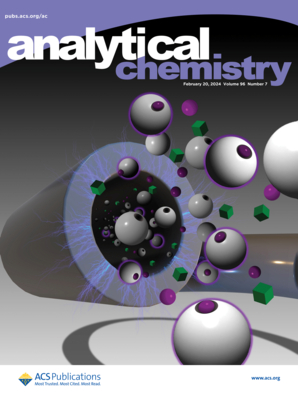On-Site Therapeutic Drug Monitoring for Program Death-1 Antibody Using a Quantum Dot Nanobeads-Based Lateral Flow Immunoassay.
IF 6.7
1区 化学
Q1 CHEMISTRY, ANALYTICAL
引用次数: 0
Abstract
Therapeutic drug monitoring of program death-1 (PD-1) inhibitor Serplulimab in cancer patients is of clinical importance in predicting treatment efficacy and assessing adverse reactions. However, the traditional liquid chromatography tandem mass spectrometry (LC-MS/MS) and enzyme-linked immunosorbent assay (ELISA) for antibody drug monitoring are time-consuming and laborious. Herein, a quantum dot nanobeads-based lateral flow immunoassay (LFIA) is developed for rapid and accurate monitoring of the PD-1 antibody drug in 15 min. Both competitive and indirect immunoassays were investigated for PD-1 antibody drug monitoring, and the competitive assay demonstrated better sensitivity and precision. The optimized competitive LFIA had a detection of limit of 5.1 μg/mL; a linear range of 10-100 μg/mL; recovery rates of 99.2%-113.9% at the spiked concentration of 25, 50 and 100 μg/mL; and coefficients of variations (CVs, n = 10) less than 14.5% at 50 μg/mL. The assay has a negligible nonspecific reaction with the interferents of other monoclonal antibody drugs, autoantibodies, hyper lipids, hemolysis, jaundice, and whole blood samples. Method comparison with ELISA in 30 human plasma samples has a good correlation factor of r = 0.87. All in all, the developed quantum dot nanobead-based LFIA system for PD-1 antibody drug monitoring is a versatile tool for rapidly personalized drug therapy at the point of care.使用基于量子点纳米珠的横向流动免疫分析对程序死亡-1抗体进行现场治疗药物监测。
PD-1 (program death-1, PD-1)抑制剂Serplulimab在癌症患者中的治疗药物监测对预测治疗效果和评估不良反应具有重要的临床意义。然而,传统的液相色谱串联质谱法(LC-MS/MS)和酶联免疫吸附法(ELISA)用于抗体药物监测耗时且费力。本研究开发了一种基于量子点纳米珠的横向流动免疫分析法(LFIA),可在15分钟内快速准确地监测PD-1抗体药物。竞争性免疫法和间接免疫法均可用于PD-1抗体药物监测,竞争性免疫法具有更好的灵敏度和精度。优化后的竞争性LFIA检出限为5.1 μg/mL;10 ~ 100 μg/mL呈线性范围;添加浓度为25、50和100 μg/mL时,回收率为99.2% ~ 113.9%;在50 μg/mL浓度下,变异系数(CVs, n = 10)小于14.5%。该试验与其他单克隆抗体药物、自身抗体、高血脂、溶血、黄疸和全血样本的干扰物有可忽略不计的非特异性反应。方法与ELISA法对30份人血浆样品进行比较,相关系数r = 0.87。总而言之,开发的基于量子点纳米珠的PD-1抗体药物监测LFIA系统是一种多功能工具,可在护理点快速个性化药物治疗。
本文章由计算机程序翻译,如有差异,请以英文原文为准。
求助全文
约1分钟内获得全文
求助全文
来源期刊

Analytical Chemistry
化学-分析化学
CiteScore
12.10
自引率
12.20%
发文量
1949
审稿时长
1.4 months
期刊介绍:
Analytical Chemistry, a peer-reviewed research journal, focuses on disseminating new and original knowledge across all branches of analytical chemistry. Fundamental articles may explore general principles of chemical measurement science and need not directly address existing or potential analytical methodology. They can be entirely theoretical or report experimental results. Contributions may cover various phases of analytical operations, including sampling, bioanalysis, electrochemistry, mass spectrometry, microscale and nanoscale systems, environmental analysis, separations, spectroscopy, chemical reactions and selectivity, instrumentation, imaging, surface analysis, and data processing. Papers discussing known analytical methods should present a significant, original application of the method, a notable improvement, or results on an important analyte.
 求助内容:
求助内容: 应助结果提醒方式:
应助结果提醒方式:


